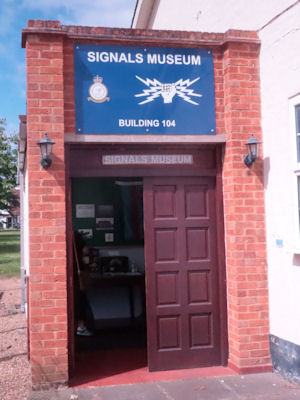

Sam Hallas' Website

The RAF Signals Museum at RAF Henlow was an excellent collection of military communications equipment which expanded to cover the period from before WWI to the more recent past.
I first visited the museum in June 2005 during the Museums on the Air weekend. Although the collection includes much radio and radar equipment, my main interest was in the telephony and telegraphy equipment. I took plenty of photographs, but can only present a selection here. I have visited again several times. I took some more photos including detailed shots of the teleprinters, some of which are included here.
Because of the sale of the land occupied by the airfield, the museum had to close in June 2024. I visited on their final day to wish the volunteers well. The Curator, Alf Fiher, told me that many of the exhibits have found new homes either with other museums of collectors.
All the images are clickable for a larger version. Use 'Esc' to return or click the X.
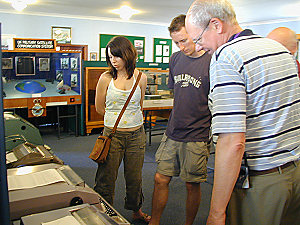
|
The museum staff were very helpful and spent time explaining the exhibits to all the visitors. |
Although the space available is limited, there is an awful lot of stuff crammed in with very informative descriptions. |
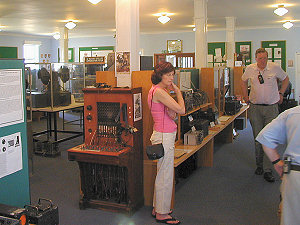 |
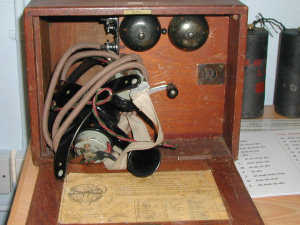 |
Let's start the tour with some of the WWI items. This is the Observer Telephone for use by the Observer Corps in forward observation posts. The headset and breast plate transmitter stow away neatly into the case, slightly obscuring the magneto handle. The instructions inside the lid show how to fold the headset up to make it fit and also contain the phonetic alphabet of the period. |
The Fullerphone was a portable DC line telegraph invented during WWI to prevent the enemy eavesdropping on communications in the trenches. See Louis Meulstee's web site for a detailed explanation of why it was a major factor in the Allied victory. |
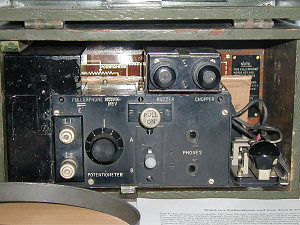 |
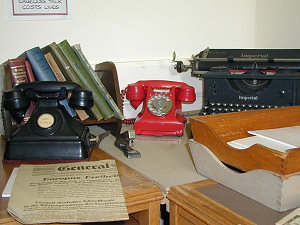 |
In a side room the museum has re-created a Y-station that gathered signals intelligence during WWII, complete with period newspapers. |
A field telephone type D. In use during WWII, though superseded later by the more familiar Type F. |
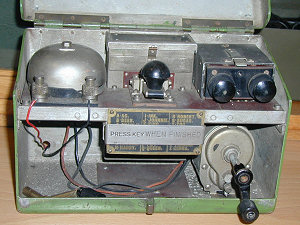 |
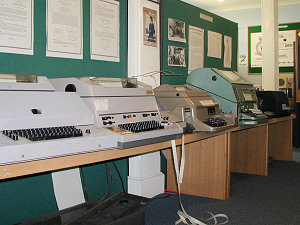 |
On now to the teleprinter display. You can see from left to right a Creed Envoy, a Creed 444, a Siemens T100, a Lorenz LO15, and right at the end two Creed model 7s. Creed's Model 444 was used by the GPO in the Telex service as PO Model No 15. Siemens T100 saw service with many armed forces round the world from the 1960s onwards. It's predecessor was the Lorenz LO15. |
The Creed Model 7 is displayed without its silence cover so you can see the works in all their glory. |
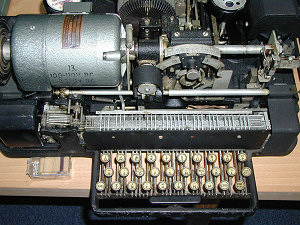 |
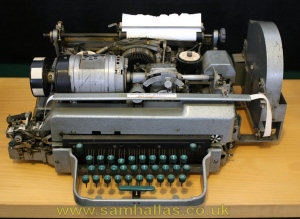 |
The Creed Model 7 range was very versatile. Here's a version that can print out a received message and punch a fresh tape copy at the same time. |
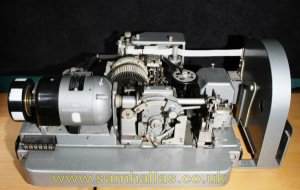 |
This version prints directly on to paper tape, which would typically have been gummed for sticking onto a telegram form. |
The Envoy is similar to the adjacent 444, but handled 8-unit code. |
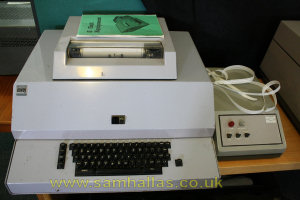 |
|
Another less common item is this Morse keyboard perforator from Creed. |
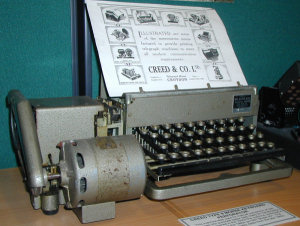 |
The last public open day was 8 June 2024. There was an excellent turnout of visitors. The RAF band arrived to serenade everyone. The Museum staff and volunteers posed with the band for a final photo call.
Collection: RAF Signals Museum, Henlow. Pictures © 2005, 2009 & 2024 Sam Hallas.